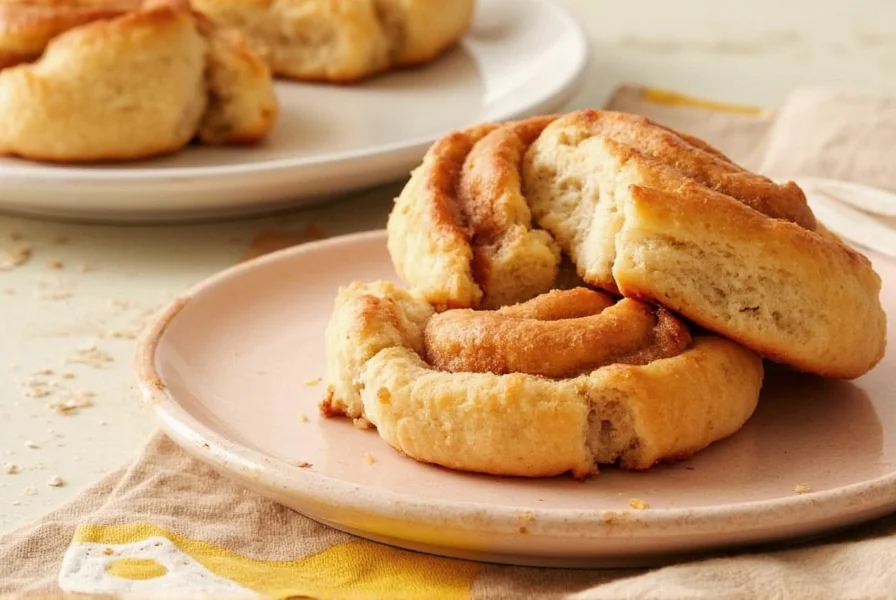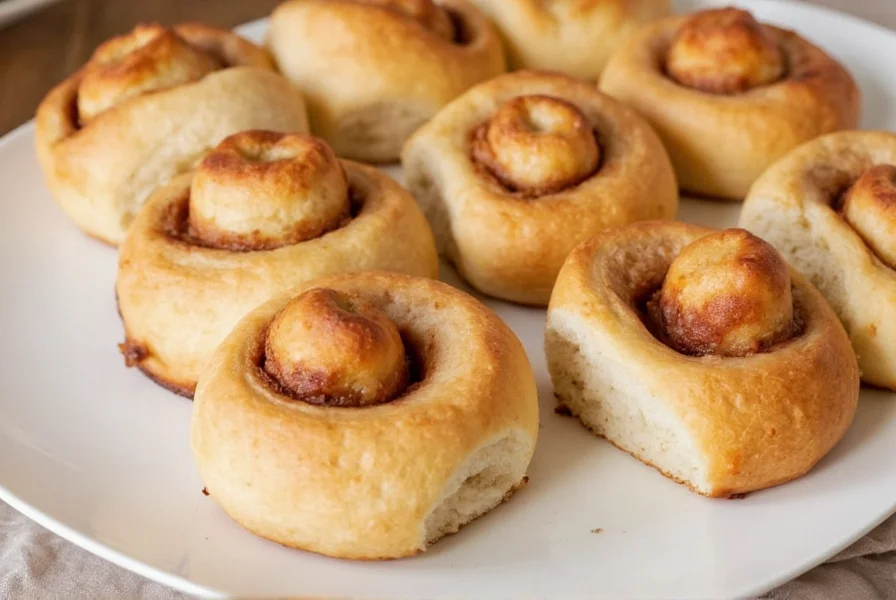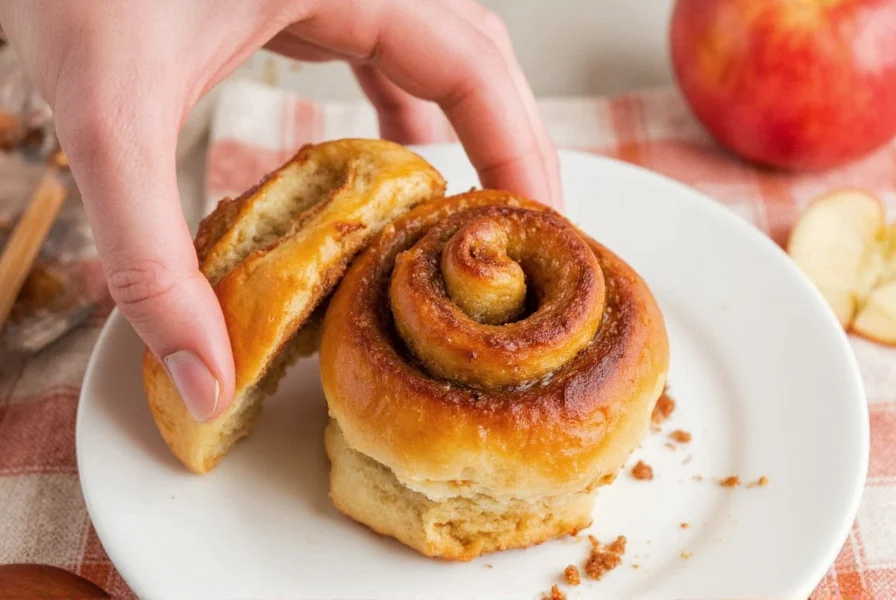The Ultimate Guide to Perfect Cinnamon Apple Rolls
There's something uniquely comforting about the aroma of cinnamon apple rolls fresh from the oven. These delightful pastries merge the beloved swirls of classic cinnamon rolls with the sweet-tart flavor of baked apples. While similar to traditional cinnamon rolls, cinnamon apple rolls present specific challenges and opportunities that require thoughtful technique to master.
Why Cinnamon Apple Rolls Deserve a Special Approach
Many home bakers make the mistake of simply adding apples to a standard cinnamon roll recipe. This often leads to disappointing results - soggy bottoms, undercooked apples, or dry pastry. The moisture content of apples significantly affects the final product, requiring adjustments to both the dough composition and baking process.
Professional bakers know that successful homemade cinnamon apple rolls recipe execution depends on three critical factors: apple preparation, dough hydration, and baking temperature control. Using the right apple variety is non-negotiable - Granny Smith apples maintain their structure while baking and provide the perfect tart contrast to the sweet filling.

Essential Ingredients for Exceptional Cinnamon Apple Rolls
The foundation of any outstanding cinnamon apple roll recipe starts with quality ingredients. While you can find many variations, the following components form the backbone of perfect results:
| Component | Critical Elements | Why It Matters |
|---|---|---|
| Apple Selection | Granny Smith, Braeburn, or Honeycrisp | These varieties hold shape during baking and provide ideal tart-sweet balance |
| Dough Hydration | Slightly drier than regular cinnamon roll dough | Compensates for apple moisture to prevent soggy bottoms |
| Filling Composition | Cinnamon, brown sugar, cornstarch, lemon juice | Cornstarch absorbs excess moisture; lemon enhances apple flavor |
| Pastry Thickness | 1/4 inch rolled dough | Thinner than regular rolls to accommodate apple layer |
Step-by-Step Preparation Guide
Follow these professional techniques for cinnamon apple rolls that impress every time. This method addresses common pitfalls in easy cinnamon apple roll preparation while delivering bakery-quality results.
Apple Preparation: The Secret to Non-Soggy Rolls
Proper apple treatment makes or breaks your cinnamon apple rolls. Simply slicing and adding apples leads to disappointing results. Instead:
- Peel and thinly slice 2 medium Granny Smith apples (1/8 inch thick)
- Toss with 1 tablespoon lemon juice and 1 teaspoon cornstarch
- Spread on parchment paper and microwave for 90 seconds
- Cool completely before assembling
This pre-cooking step removes excess moisture while maintaining apple structure - crucial for preventing that dreaded soggy bottom in your cinnamon apple roll baking.
Dough and Assembly Techniques
While you can use your favorite yeast roll dough, adjust for the apple component:
- Reduce liquid in dough by 2 tablespoons to compensate for apple moisture
- Roll dough slightly thinner than for regular cinnamon rolls (about 1/4 inch)
- Spread filling evenly but leave 1/2 inch border on long side for sealing
- Arrange pre-treated apple slices in a single layer over the filling
- Roll tightly and seal seam with water or egg wash

Baking Tips for Perfect Results Every Time
Temperature control separates good cinnamon apple rolls from great ones. The apple component requires specific baking considerations that differ from traditional cinnamon rolls.
Optimal Baking Conditions
Set your oven to 350°F (175°C) - slightly lower than standard cinnamon roll temperature. Bake for 25-30 minutes until golden brown and internal temperature reaches 190°F (88°C). The lower temperature allows apples to cook through without burning the pastry.
Place rolls in the center of the oven and rotate the pan halfway through baking for even browning. If tops brown too quickly, tent loosely with aluminum foil.
Testing for Doneness
Don't rely solely on appearance. Insert an instant-read thermometer into the center of a roll - it should read 190°F (88°C). The apples should be tender but still hold their shape when pierced with a toothpick.
Delicious Variations to Try
Once you've mastered the basic technique for how to make apple cinnamon rolls from scratch, experiment with these professional variations:
- Caramel Apple Rolls: Drizzle 1/4 cup caramel sauce over apples before rolling
- Nutty Version: Add 1/3 cup finely chopped pecans or walnuts to the filling
- Spiced Apple Rolls: Incorporate 1/4 teaspoon each of nutmeg and allspice into the filling
- Gluten-Free Option: Use a quality gluten-free dough recipe with xanthan gum
- Vegan Alternative: Substitute plant-based butter and milk in the dough
Serving and Storage Recommendations
Cinnamon apple rolls are best served warm, shortly after baking. The ideal serving temperature allows the icing to melt slightly into the crevices while keeping the pastry structure intact.
For storage, keep in an airtight container at room temperature for up to 2 days. For longer storage, freeze unbaked rolls on a baking sheet, then transfer to freezer bags. Bake from frozen, adding 5-7 minutes to the baking time.
Common Problems and Professional Solutions
Even experienced bakers encounter issues with cinnamon apple rolls. Here's how to troubleshoot the most frequent challenges:
- Soggy Bottoms: Result from excess apple moisture. Always pre-treat apples and consider adding 1-2 teaspoons cornstarch to the filling.
- Dry Pastry: Usually from overbaking or insufficient fat in dough. Check oven temperature accuracy and don't skip the resting time after baking.
- Unraveling Rolls: Seal the dough edge thoroughly with water or egg wash, and ensure your roll is tight before cutting.
- Undercooked Apples: Slice apples uniformly thin (1/8 inch) and consider the microwave pre-treatment step.
Final Thoughts on Perfecting Your Cinnamon Apple Rolls
Mastering the art of cinnamon apple rolls requires attention to detail but rewards with an exceptional pastry that combines the best of apple pie and cinnamon rolls. The perfect cinnamon apple rolls technique balances moisture management with flavor development, creating a pastry that's neither dry nor soggy, with apples that are tender but still distinct.
Remember that practice improves results - your first batch might not be perfect, but understanding why certain techniques work (like pre-treating the apples or adjusting dough hydration) will help you refine your approach. With these professional insights, you're well-equipped to create cinnamon apple rolls that delight everyone at your table.











 浙公网安备
33010002000092号
浙公网安备
33010002000092号 浙B2-20120091-4
浙B2-20120091-4